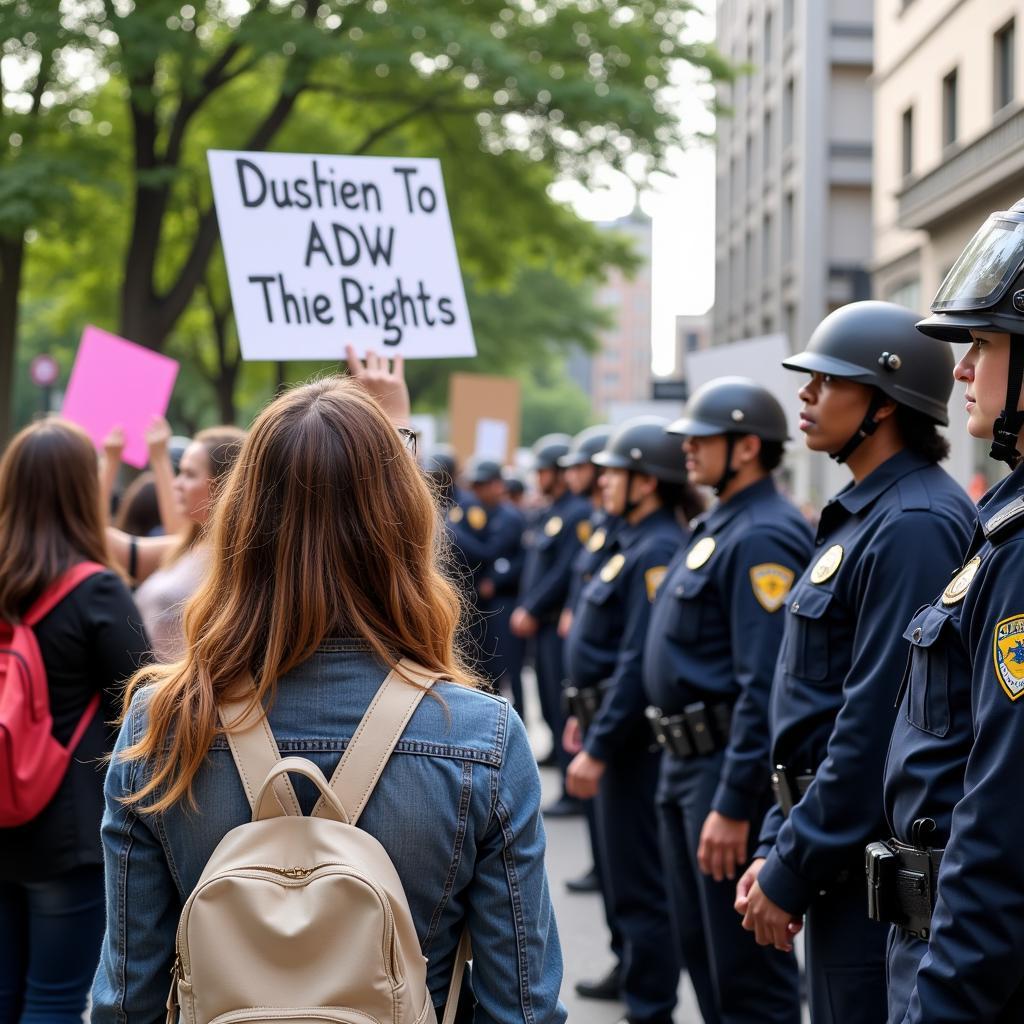A Deep Dive into African Hair Culture
African Hair Culture is a vibrant tapestry woven from centuries of tradition, creativity, and social significance. More than just strands, hair represents identity, status, and heritage for people of African descent across the globe. From the intricate braiding patterns to the diverse natural styles, African hair tells a story as rich and varied as the continent itself.
Unraveling the History of African Hair Styles
Throughout history, African hairstyles have served as markers of ethnicity, social standing, and even marital status. In ancient Egypt, elaborate wigs and extensions adorned with gold and jewels signified wealth and power. Among various tribes, specific braiding patterns denoted age, lineage, and social roles. For instance, warriors might sport distinct hairstyles to intimidate enemies, while married women often styled their hair differently from unmarried girls.
The transatlantic slave trade brought about a painful disruption to African hair traditions. Forcibly separated from their cultures, enslaved Africans were often subjected to shaving their heads, erasing a vital part of their identity. However, even in the face of such adversity, African hairways persisted, evolving into new forms that blended African aesthetics with the realities of their new environments.
The Significance of Braids in African Culture
Braiding is arguably the most iconic element of African hair culture. Far beyond mere aesthetics, braids are deeply symbolic and serve a multitude of practical purposes. The act of braiding itself is a communal activity, often passed down through generations of women, fostering bonds and sharing knowledge.
Different braiding styles carry specific meanings. Cornrows, characterized by their close-to-the-scalp pattern, are incredibly versatile and can be styled in countless ways. Box braids, with their distinct square-shaped partitions, offer a bolder look. Other popular styles include Senegalese twists, crochet braids, and locs, each reflecting unique aesthetics and cultural nuances.
Natural Hair Movement: Embracing Texture and Identity
In recent decades, there’s been a global movement towards embracing natural hair textures. This shift is particularly significant within the African diaspora, as it represents a reclaiming of identity and a rejection of Eurocentric beauty standards that have long marginalized afro-textured hair.
From powerful afros to defined curls, the natural hair movement encourages individuals to celebrate their hair in its most authentic form. This movement goes beyond aesthetics, prompting conversations about self-love, acceptance, and challenging societal norms that dictate what is considered “beautiful” or “professional.”
African Hair Care: Traditional Practices and Modern Innovations
Caring for African hair, with its unique texture and curl patterns, requires specific knowledge and practices. Traditionally, natural ingredients like shea butter, coconut oil, and aloe vera have been used for generations to moisturize, strengthen, and protect hair. These ingredients continue to be incorporated into modern hair care products tailored for afro-textured hair.
african hair painting is a fascinating aspect of African hair culture, adding another layer of artistry and expression.
Understanding the specific needs of your hair type is crucial. For instance, afro-textured hair tends to be more prone to dryness and breakage, requiring gentle handling and regular deep conditioning. With the rise of the natural hair movement, there’s now a wealth of information and resources available to help individuals care for and style their natural hair with confidence.
Beyond Aesthetics: African Hair as a Cultural Touchstone
African hair culture is a vibrant testament to the resilience, creativity, and diversity of the African diaspora. From its historical significance to its modern-day resurgence, African hair continues to be a source of pride, identity, and self-expression. More than just strands, African hair is a powerful symbol of heritage, resilience, and the beauty of diversity.
FAQ:
1. What are some popular protective styles for African hair?
Protective styles like African kids braids hairstyles, box braids, Senegalese twists, and crochet braids help protect hair from damage and promote growth.
2. What are some natural ingredients beneficial for African hair?
Shea butter, coconut oil, aloe vera, and castor oil are excellent natural ingredients for moisturizing and strengthening African hair.
3. How often should I wash my African hair?
Washing frequency varies depending on hair type and personal preference, but generally, washing once or twice a week is sufficient.
4. Are there specific products for african boy hair style?
Absolutely! Many brands cater to the specific needs of all hair types and styles.
5. Where can I find inspiration for african hairstyles 2020 and beyond?
Social media platforms like Instagram and Pinterest are treasure troves of inspiration for diverse and stylish African hairstyles. Don’t forget to check out resources for african american braided hairstyles video for step-by-step tutorials and ideas.
Need More Information on African Hair Culture?
Do you have more questions about African hair care, styling, or its cultural significance? We’re here to help! Contact us at +255768904061 or [email protected]. You can also visit us in person at Mbarali DC Mawindi, Kangaga, Tanzania. Our dedicated team is available 24/7 to answer your queries and provide personalized guidance.


